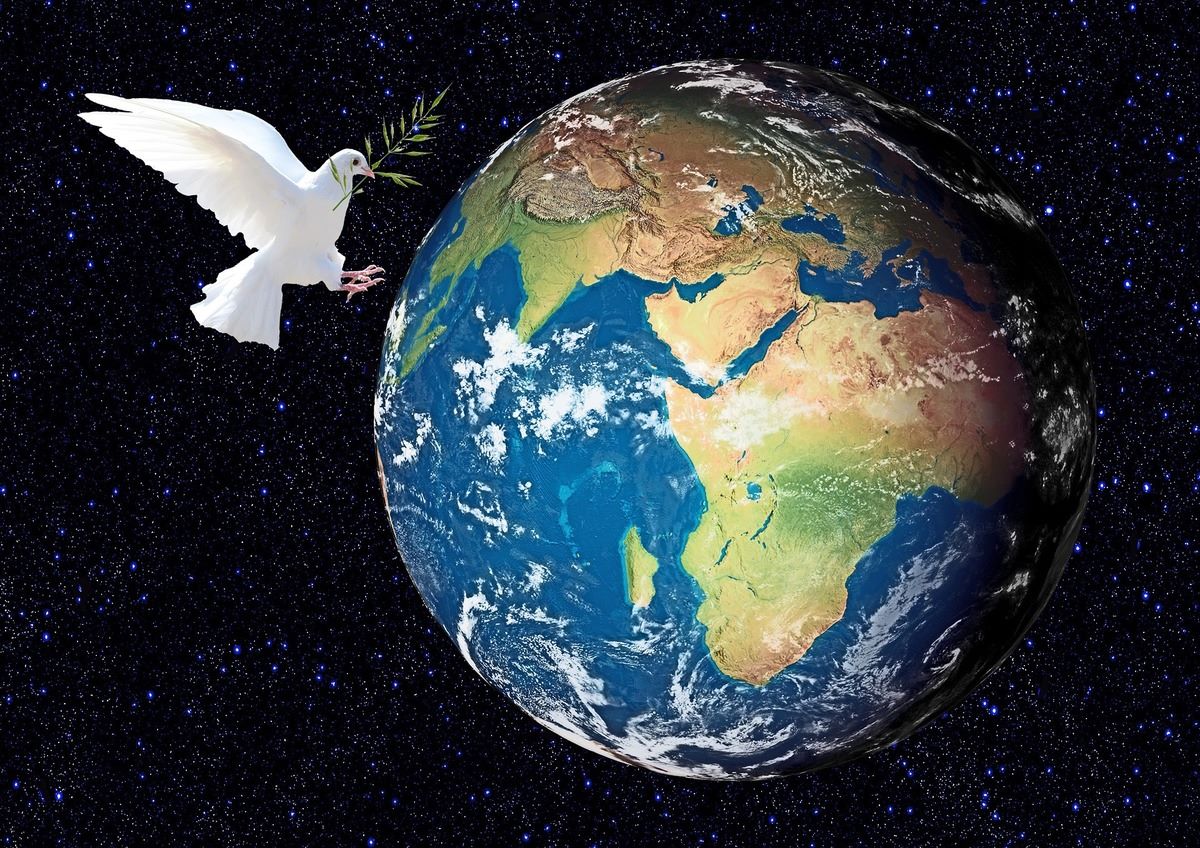
The Thin Red Line is a critically acclaimed war film directed by Terrence Malick, released in 1998. Set during World War II, the movie tells the story of a group of soldiers from C Company as they experience the horrors of the Battle of Guadalcanal in the Pacific. While the film primarily focuses on the individual lives and inner struggles of the soldiers, it also explores themes of nature, humanity, and the morality of war. The Thin Red Line is renowned for its stunning cinematography, powerful performances, and thought-provoking narrative. In this article, we will delve into 31 fascinating facts about this iconic movie, shedding light on its production, reception, and enduring legacy in the world of cinema. From surprising casting choices to the challenges of filming in remote locations, these facts offer a deeper understanding of the profound impact The Thin Red Line has had on the world of filmmaking.
Key Takeaways:
- The Thin Red Line is a powerful war movie with stunning visuals and deep themes that make you think about the meaning of war and the choices we make in tough times.
- The film’s unique style and all-star cast, along with its exploration of human nature and the camaraderie of soldiers, have left a lasting impact on audiences worldwide.
The Thin Red Line was released in 1998.
The epic war film, directed by Terrence Malick, made its debut in 1998, garnering critical acclaim and leaving a lasting impact on audiences.
The movie is based on a novel by James Jones.
The Thin Red Line was adapted from James Jones’ 1962 novel of the same name, which was loosely inspired by his experiences in World War II.
The film features an all-star cast.
The Thin Red Line boasts an impressive ensemble cast including Sean Penn, Adrien Brody, Jim Caviezel, and George Clooney, among others.
It was nominated for seven Academy Awards.
The film received critical acclaim and was nominated for seven Academy Awards, including Best Picture, Best Director, and Best Adapted Screenplay.
The Thin Red Line won the Golden Bear at the Berlin International Film Festival.
At the 1999 Berlin International Film Festival, the movie was awarded the prestigious Golden Bear, recognizing its artistic excellence.
The movie combines multiple storylines.
The Thin Red Line weaves together various narrative threads, exploring the experiences and emotions of different soldiers during the Battle of Guadalcanal.
The film has a unique visual style.
Terrence Malick’s signature cinematography and poetic storytelling techniques create a visually stunning and emotionally evocative experience for viewers.
The Thin Red Line has a profound philosophical undertone.
The movie delves into existential questions about war, nature, and the human condition, inviting deep reflection and contemplation.
It took more than a decade to develop the film.
Terrence Malick spent over ten years developing and refining the script before finally bringing The Thin Red Line to the big screen.
The movie showcases the beauty and brutality of war.
Through breathtaking visuals and intense battle sequences, The Thin Red Line captures both the awe-inspiring landscapes of the Pacific island and the devastating horrors of war.
Hans Zimmer composed the film’s haunting score.
Renowned composer Hans Zimmer created the powerful and evocative score for The Thin Red Line, enhancing the emotional impact of the story.
Numerous renowned directors had cameos in the film.
Directors such as John Travolta, John C. Reilly, and George Clooney made cameo appearances in The Thin Red Line, adding to its star-studded ensemble.
The Thin Red Line received praise for its realistic portrayal of war.
The film was lauded for its authenticity and depiction of the physical and psychological toll that war takes on soldiers.
The movie explores the complexities of human nature.
Through its multifaceted characters and their moral struggles, The Thin Red Line delves into the depths of human nature, examining themes of good and evil.
The Thin Red Line was filmed in various locations.
The production team traveled to Queensland, Australia, and the Solomon Islands to capture the stunning landscapes that served as the backdrop for the film.
The movie’s runtime is over two and a half hours.
With a runtime of approximately 170 minutes, The Thin Red Line offers audiences an immersive and expansive cinematic experience.
The film drew inspiration from various artistic sources.
Terrence Malick took inspiration from a wide range of works, including the poetry of World War I poet Keith Douglas and the paintings of Mark Rothko.
The Thin Red Line was the second adaptation of James Jones’ novel.
Prior to Terrence Malick’s version, The Thin Red Line was adapted into a film in 1964 by director Andrew Marton.
The movie had a profound impact on many veterans.
Veterans who watched The Thin Red Line praised its authentic portrayal of the emotional and psychological trauma that soldiers face during war.
The Thin Red Line features reflective voiceovers.
Throughout the film, characters share their inner thoughts and contemplations through introspective voiceovers, adding depth to their experiences.
The film emphasizes the beauty and spirituality of nature.
Amidst the chaos of war, The Thin Red Line highlights the serenity and transcendence found in nature, serving as a powerful contrast to the brutality of battle.
The Thin Red Line explores the loss of innocence.
As the characters navigate through the horrors of war, the film explores the profound impact it has on their innocence and moral compass.
The movie’s title refers to a line from a Rudyard Kipling poem.
The phrase “the thin red line” is derived from Rudyard Kipling’s poem “Tommy” and represents the courage and resilience of soldiers in combat.
The Thin Red Line received mixed reactions upon release.
While it was applauded by critics for its artistic merits, the film divided audiences due to its contemplative and unconventional approach to the war genre.
The movie was a box office success.
Despite the initial mixed reception, The Thin Red Line went on to achieve commercial success, solidifying its position as a significant cinematic achievement.
The Thin Red Line was a labor of love for Terrence Malick.
Known for his meticulous approach to filmmaking, Terrence Malick dedicated years of his life to crafting The Thin Red Line with uncompromising dedication.
The film captures the camaraderie among soldiers.
Through its nuanced portrayals of friendship and camaraderie, The Thin Red Line showcases the bonds formed between soldiers in the midst of adversity.
The Thin Red Line explores the futility of war.
The movie raises profound questions about the purpose and consequences of war, questioning its ultimate value and highlighting its destructive nature.
The movie’s imagery is open to interpretation.
The stunning visuals and poetic imagery of The Thin Red Line allow audiences to interpret and derive personal meaning from the film’s visuals and symbolism.
The Thin Red Line was universally praised for its cinematography.
Cinematographer John Toll received widespread acclaim for his masterful work, capturing the beauty and chaos of war with stunning visual compositions.
The film has left an enduring legacy.
The Thin Red Line continues to be revered as a cinematic masterpiece, exploring the human experience in times of war and touching the hearts of audiences worldwide.
Conclusion
In conclusion, The Thin Red Line is a masterpiece that delves deep into the complexities of war and the human spirit. Directed by Terrence Malick, the film stands out for its stunning cinematography, powerful performances, and thought-provoking narrative. With its philosophical themes and poetic storytelling, it offers a unique perspective on the horrors and moral dilemmas faced by soldiers during World War II.
The Thin Red Line reminds us of the fragility of life, the inherent goodness and darkness within humanity, and the profound impact of war on individuals. It challenges viewers to question the nature of violence, courage, and sacrifice, leaving a lasting impression long after the credits roll.
Whether you’re a fan of war films or simply appreciate thought-provoking cinema, The Thin Red Line is a must-watch that will captivate and move you.
FAQs
Q: Who directed The Thin Red Line?
A: The Thin Red Line was directed by Terrence Malick.
Q: When was The Thin Red Line released?
A: The film was released in 1998.
Q: Is The Thin Red Line based on a true story?
A: No, The Thin Red Line is not based on a true story. It is an adaptation of the 1962 novel of the same name by James Jones.
Q: Who are some of the notable actors in the film?
A: The Thin Red Line features a talented ensemble cast, including Sean Penn, Jim Caviezel, Nick Nolte, Elias Koteas, Ben Chaplin, and John Cusack.
Q: What is the genre of The Thin Red Line?
A: The Thin Red Line is a war drama film.
Q: Did The Thin Red Line receive any awards or nominations?
A: Yes, the film received several accolades including 7 Academy Award nominations and won the Golden Bear at the Berlin International Film Festival.
Q: How is The Thin Red Line different from other war films?
A: The Thin Red Line stands out for its poetic and philosophical approach to war, exploring deeper themes of humanity and the nature of violence, rather than focusing solely on action and battle sequences.
Q: Is The Thin Red Line suitable for all audiences?
A: The film is rated R for war violence and language, so viewers should exercise discretion.
Terrence Malick's epic war film, The Thin Red Line, offers a thought-provoking and visually stunning exploration of the human condition amidst the chaos of battle. If you're fascinated by the complexities of armed conflict, our article on Vietnam War facts delves into the intricacies of one of the most controversial wars in modern history. For those captivated by the power of storytelling, gripping drama facts await, shedding light on the art of crafting emotionally charged narratives. And if you find yourself pondering life's deeper questions, our piece on philosophical insights from Plato offers a chance to explore the wisdom of one of history's greatest thinkers.
Was this page helpful?
Our commitment to delivering trustworthy and engaging content is at the heart of what we do. Each fact on our site is contributed by real users like you, bringing a wealth of diverse insights and information. To ensure the highest standards of accuracy and reliability, our dedicated editors meticulously review each submission. This process guarantees that the facts we share are not only fascinating but also credible. Trust in our commitment to quality and authenticity as you explore and learn with us.


